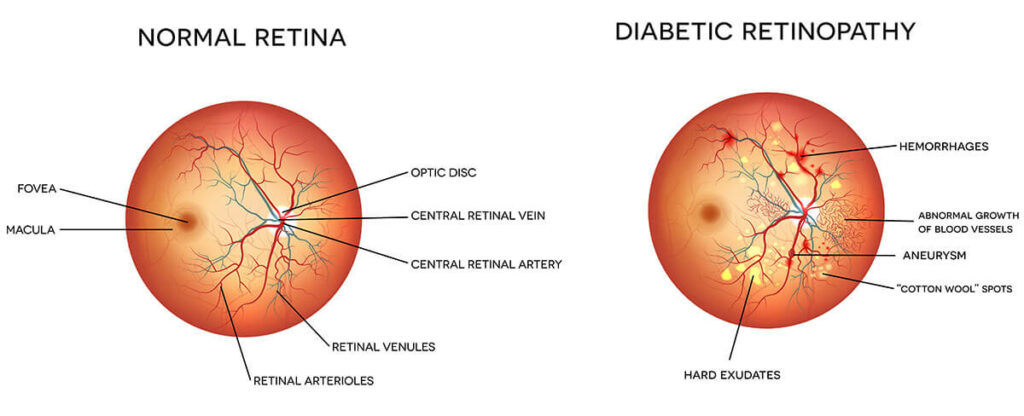Diabetic retinopathy is the leading cause of vision loss in middle-aged adults. Diabetic retinopathy results from having diabetes and a high blood sugar count which can cause damage to the retinal blood vessels in the back of the eye. If these conditions are left untreated for an extended period of time, it can lead to permanent blindness in individuals.

Are There Different Kinds of Diabetic Retinopathy?
There are two different stages of diabeic retinopathy. The first is non-proliferative, in which the blood vessels in the retina can become enlarged and blocked. The second is called proliferative. Proliferative is the most advanced stage, this can lead to breaking of the blood vessels which can cause considerable vision loss.
How Is Diabetic Retinopathy Diagnosed?
The most common way to diagnose diabetic retinopathy in the early stages is by a dilated eye exam. The other most common way to detect diabetic retinopathy is an Optical Coherence Tomography for mild cases. For the more serious cases, a fluorescein angiogram will be necessary to detect the seriousness of this disorder.
Like most retinal conditions, early detection and proper treatment are very important when it comes to saving your vision. If you believe you are experiencing diabetic retinopathy symptoms, visit one of our retina specialists today.
{CTA button}








